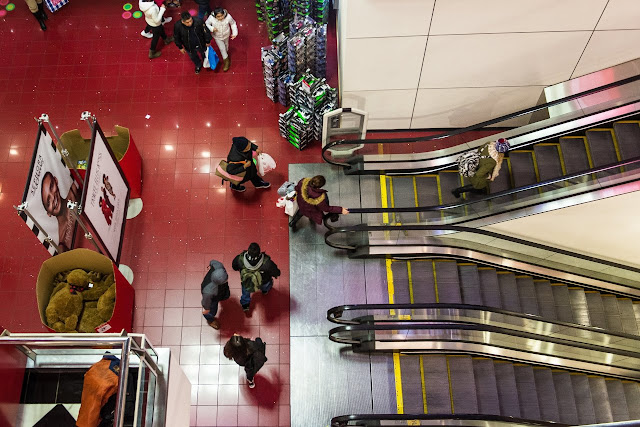THE BRIGHT SIDE OF LOW INFLATION / THE WALL STREET JOURNAL
The Bright Side of Low Inflation
Retailers can’t raise prices, so consumers are spending more. That will help the Fed raise rates next month
By Justin Lahart
Shoppers walk inside the Manhattan Mall in New York. Photo: Idris Talib Solomon/Bloomberg News
Low inflation might be a worrying puzzle for the Federal Reserve, but it is also putting more spring in consumer spending. That will make it easier for the central bank to raise rates again when it meets next month.
The Labor Department released its October report on consumer prices Wednesday and, no surprise here, they showed inflation remained remarkably cool. Overall, prices gained just 0.1% from a month earlier, putting them up a scant 2% from a year earlier. The core index, which excludes food and energy prices to better capture inflation’s trend, was up just 1.8% on the year.
STEADY GOING
Change in retail sales, excluding gasoline stations, from a year earlier
Economists at the Fed and elsewhere think inflation is going to pick up over the next year. How could it not, with the unemployment rate so low, the dollar weaker and the global economy humming? The problem is that people have been waiting for inflation for a while, often arguing that temporary factors are keeping it down. For some at the Fed that counts as reason to hold off on raising rates—tightening too much when inflation is so low could be a dangerous mistake.
But most Fed policy makers believe the economy is performing well enough to handle a continued gradual drift up in interest rates. October retail sales figures, also released Wednesday, underscore that view.
The Commerce Department said that retail sales rose 0.2% in October from a month earlier—a bit better than economists expected—and it revised September sales higher. The report showed that, although the sales data have lately been whipsawed by the effects of this year’s hurricanes, the underlying tone of consumer spending as the fourth quarter got underway was decent.
There is a healthy link between low inflation and solid consumer spending. Without steady price increases, retailers are forced to compete, lowering costs for consumers and allowing them to buy more. One reason Target’s results on Wednesday disappointed investors is that its low prices are boosting sales but cutting into profits.
If consumers haven’t been troubled by the modest rate increases the Fed has put through so far, they probably won’t be troubled by another one in December. And while there are questions about how much staying power consumer spending will have—the saving rate is low, hiring gains have been slowing and banks are tightening lending standards—those are questions for next year.


0 comments:
Publicar un comentario